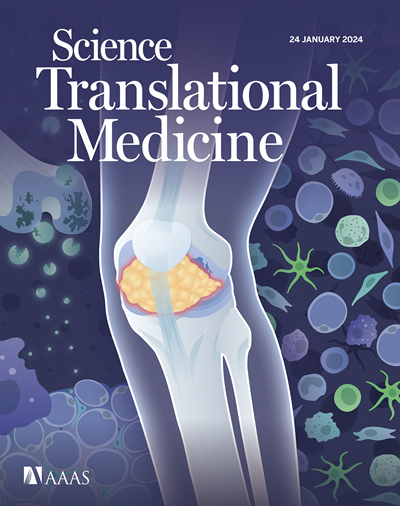Glucocorticoids induce a maladaptive epithelial stress response to aggravate acute kidney injury
IF 15.8
1区 医学
Q1 CELL BIOLOGY
引用次数: 0
Abstract
Acute kidney injury (AKI) is a frequent and challenging clinical condition associated with high morbidity and mortality and represents a common complication in critically ill patients with COVID-19. In AKI, renal tubular epithelial cells (TECs) are a primary site of damage, and recovery from AKI depends on TEC plasticity. However, the molecular mechanisms underlying adaptation and maladaptation of TECs in AKI remain largely unclear. Here, our study of an autopsy cohort of patients with COVID-19 provided evidence that injury of TECs by myoglobin, released as a consequence of rhabdomyolysis, is a major pathophysiological mechanism for AKI in severe COVID-19. Analyses of human kidney biopsies, mouse models of myoglobinuric and gentamicin-induced AKI, and mouse kidney tubuloids showed that TEC injury resulted in activation of the glucocorticoid receptor by endogenous glucocorticoids, which aggravated tubular damage. The detrimental effect of endogenous glucocorticoids on injured TECs was exacerbated by the administration of a widely clinically used synthetic glucocorticoid, dexamethasone, as indicated by experiments in mouse models of myoglobinuric- and folic acid–induced AKI, human and mouse kidney tubuloids, and human kidney slice cultures. Mechanistically, studies in mouse models of AKI, mouse tubuloids, and human kidney slice cultures demonstrated that glucocorticoid receptor signaling in injured TECs orchestrated a maladaptive transcriptional program to hinder DNA repair, amplify injury-induced DNA double-strand break formation, and dampen mTOR activity and mitochondrial bioenergetics. This study identifies glucocorticoid receptor activation as a mechanism of epithelial maladaptation, which is functionally important for AKI.
糖皮质激素诱导适应不良的上皮应激反应,加剧急性肾损伤
急性肾损伤(AKI)是一种常见且具有挑战性的临床症状,与高发病率和高死亡率相关,是COVID-19重症患者的常见并发症。在 AKI 中,肾小管上皮细胞(TEC)是主要的损伤部位,而 AKI 的恢复取决于 TEC 的可塑性。然而,AKI 中肾小管上皮细胞适应和不适应的分子机制在很大程度上仍不清楚。在此,我们对 COVID-19 患者尸检队列的研究提供了证据,证明横纹肌溶解释放的肌红蛋白对 TEC 的损伤是严重 COVID-19 患者发生 AKI 的主要病理生理机制。对人类肾活检组织、肌红蛋白尿和庆大霉素诱导的 AKI 小鼠模型以及小鼠肾小管的分析表明,TEC 损伤导致内源性糖皮质激素激活糖皮质激素受体,从而加重了肾小管损伤。在肌红蛋白尿和叶酸诱导的 AKI 小鼠模型、人和小鼠肾小管以及人肾切片培养物中进行的实验表明,给予临床广泛使用的合成糖皮质激素地塞米松会加剧内源性糖皮质激素对损伤的 TEC 的有害作用。从机理上讲,对小鼠 AKI 模型、小鼠肾小管和人肾切片培养物的研究表明,损伤的 TEC 中糖皮质激素受体信号传导协调了一种不适应的转录程序,阻碍了 DNA 修复,扩大了损伤诱导的 DNA 双链断裂的形成,抑制了 mTOR 活性和线粒体生物能。这项研究确定了糖皮质激素受体激活是上皮适应不良的一种机制,而上皮适应不良在功能上对 AKI 非常重要。
本文章由计算机程序翻译,如有差异,请以英文原文为准。
求助全文
约1分钟内获得全文
求助全文
来源期刊

Science Translational Medicine
CELL BIOLOGY-MEDICINE, RESEARCH & EXPERIMENTAL
CiteScore
26.70
自引率
1.20%
发文量
309
审稿时长
1.7 months
期刊介绍:
Science Translational Medicine is an online journal that focuses on publishing research at the intersection of science, engineering, and medicine. The goal of the journal is to promote human health by providing a platform for researchers from various disciplines to communicate their latest advancements in biomedical, translational, and clinical research.
The journal aims to address the slow translation of scientific knowledge into effective treatments and health measures. It publishes articles that fill the knowledge gaps between preclinical research and medical applications, with a focus on accelerating the translation of knowledge into new ways of preventing, diagnosing, and treating human diseases.
The scope of Science Translational Medicine includes various areas such as cardiovascular disease, immunology/vaccines, metabolism/diabetes/obesity, neuroscience/neurology/psychiatry, cancer, infectious diseases, policy, behavior, bioengineering, chemical genomics/drug discovery, imaging, applied physical sciences, medical nanotechnology, drug delivery, biomarkers, gene therapy/regenerative medicine, toxicology and pharmacokinetics, data mining, cell culture, animal and human studies, medical informatics, and other interdisciplinary approaches to medicine.
The target audience of the journal includes researchers and management in academia, government, and the biotechnology and pharmaceutical industries. It is also relevant to physician scientists, regulators, policy makers, investors, business developers, and funding agencies.
 求助内容:
求助内容: 应助结果提醒方式:
应助结果提醒方式:


